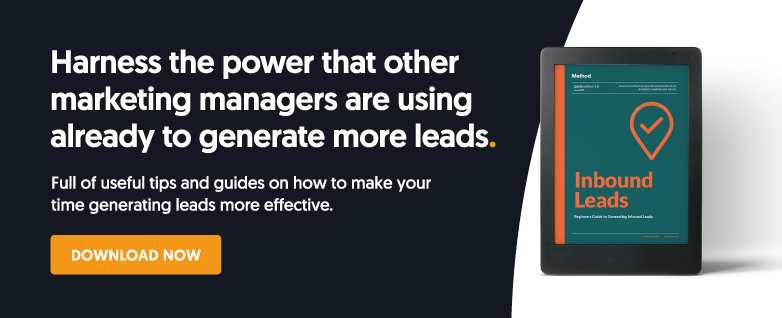Following our previous feature on obtaining customer feedback, we continue to explore the exponential value in learning about your audience's experience of your product or service.
Learn how to unlock a brand's full potential; read on...
7. Create paper feedback cards.
Actively engaging with their customers and their direct experience of your brand, paper feedback cards offer a business the opportunity to consolidate their reputation. Ideally, feedback cards should be provided in a shop or studio space or mailed out with an invoice or a product. Allowing customers the opportunity to air their concerns and compliments in the moment, when emotions and opinions are most charged, paper cards offer a personal and direct avenue for your audience to take an active role in contributing their feedback. Customer comment cards should request contact information. Therefore, feedback is obtained, and valuable marketing information can be added to a database (a consent box should be included on the feedback card). Thus comments are conveyed, alongside the opportunity to cascade and promote details relating to future events, special offers or exclusive discounts.
Once all information has been collated from your paper feedback cards, be sure to correlate and analyse both the qualitative and quantitative data and chart the results year to year. Paper feedback is excellent for creating a SWOT analysis form. By identifying strengths, weaknesses, opportunities, and threats related to your brand, a strategic planning process can be formed, which can be referred back to frequently, comparing and contrasting improvements and failures.
8. Review live chat transcripts.
The most valuable information live chat transcripts highlight are the areas of your user's journey that require attention. Visitors to your website will most likely be engaging with your live chat tools to identify barriers to a sale or navigation issues. The user experience is a crucial part of your customer's sale journey. If there are frustrating glitches or faulty links highlighted, these be addressed and then improved to streamline the purchasing process.
Reviewing transcripts is also a helpful tool for gleaming what is most important for the customer, where most users spend time on a specific area of your website. Analyse the language used and review the chatbots' attitude to ensure customer service is maintained at a high level.
9. Analyse recorded sales calls
Identifying call pain points and exploring the detail that defines the difference between initial prospective interest and then purchasing elongates sales cycles. So many varying nuances are essential when analysing a sales call. The dissection and comprehension of what works, doesn't work, and that which might increase the chances of dealing with that critical point of potential sale differently in the future is lucrative information. Conversation quality should be continually refined when aspiring towards sustained improvement cycles. Hearing your customer responses to pitches and discussions will facilitate transcript reviews, product or service development and brand language analysis. Your customers hold the secret to transforming your business, helping you make more sales, so listen carefully to what they have to say, incorporate their advice and then watch your revenue increase.
10. Embeddable widgets
Non-intrusive, facilitating better lead data, integration with backend systems, complete with customisable design, instant feedback widgets enable data to be collected from embeddable forms, which can be directly pushed into your CRM or marketing automation systems. In addition to allowing quick and easy customer feedback solutions, widgets offer insight into your audiences location, bounce-rate and overall satisfaction. Beacon and Connecto offer easy to use, well-designed software tools ideal for customised, targeted widget building.
Widgets are also a great way to conduct A/B testing, also known as split testing. This is the process for contrasting two variants of the same web page to different segments of website visitors at the same time and comparing which variant drives more conversions. This, in turn, provides essential insight into your user's behaviour, informing factors such as high bounce rates and high exit rates from your sales funnel.
11. Record website visitor session replays.
If a website does not facilitate an experience that users enjoy and find rewarding, then your brand won't flourish. Lose their immediate interest online, and your site's conversion rate will decline. Broken links, corrupted files, clunky navigation, and poor design will negatively impact your reputation and will, essentially, result in unsatisfied customers. Session replay tools offer comprehensive insight into the reasons elements of your website are failing, gathering useful feedback that can provide solutions to these problems. Hotjar and Yandex record user's journey on websites, overseeing how and audience interacts and navigates the site. This is an authentic and organic way of monitoring your brands' real-life experience, online translation with potential new leads. Perfect his journey, and your sales and revenue will skyrocket.
12. Adopt net promoter score
Quick, easy and therefore appealing to customers, net promoter scores numerically quantify and measure customer feedback. Scaling satisfaction from 1-10, net promoter score measures the likelihood of repeat custom, rating customers likelihood to recommend a company, a product, or a service to a friend or colleague, alongside their satisfaction with a company's product or service and the customer's loyalty to the brand. Scores from 0-6 reflect poor performance defined as "detractors." Scores between 7-8 are neutral or "passive." Scores of nine and ten represent positive experiences and are identified as "promoters."An efficient tool for the customer to use to reflect on your brand, the longer they spend identifying the strengths to your company the higher the likelihood of their return custom. Word your questions careful and keep the language simple and straightforward and the quantitate data you harvest will be easy to record and analyse.





